Discover 11 hidden attractions, cool sights, and unusual things to do in Beebe (United States). Don't miss out on these must-see attractions: Stipe Cotton Gin, Col. Ralph Andrews House, and Lizzie Garrard House. Also, be sure to include Shue House in your itinerary.
Below, you can find the list of the most amazing places you should visit in Beebe (Arkansas).
Table of Contents
Stipe Cotton Gin

The Stipe Cotton Gin is a historic cotton gin at Florida and Cypress Streets in Beebe, Arkansas. It is a two-story steel-framed structure, clad in corrugated metal, that houses the steam compressor and other equipment for processing and baling cotton. The complex also includes a seed storage building, and a circular structure of uncertain function. Built about 1930, it is one of only five to survive in White County from that period, when cotton production was locally at its peak.
The complex was listed on the National Register of Historic Places in 1992.[1]
Col. Ralph Andrews House
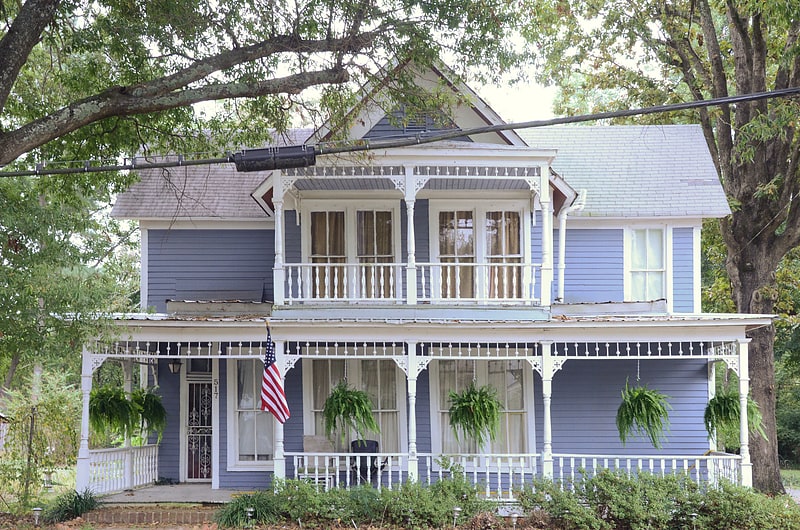
Building in Beebe. The Col. Ralph Andrews House is a historic house at 517 W. Center St. in Beebe, Arkansas. Built c. 1885, it is one of a small number of houses in Beebe to survive from the early period of the city's growth. It is a 2+1⁄2-story wood-frame structure, with clapboard siding, and a Folk Victorian porch with turned posts and jigsawn brackets. The building's cruciform plan is fairly typical of houses built in White County during the period; this is one of the best-preserved of those that remain.
The house was listed on the National Register of Historic Places in 1991.[2]
Lizzie Garrard House

The Lizzie Garrard House is a historic house on North Cypress Street in Beebe, Arkansas. It is a 1+1⁄2-story wood-frame structure, with a gable-on-hip roof that has a forward-projecting gable section. The gable end is finished in decorative cut shingles, with bargeboard along the rake edges. A porch wraps across the front, with turned posts and balusters, and a delicate spindlework valance. Built about 1906, it is a good local example of Folk Victorian architecture.
The house was listed on the National Register of Historic Places in 1991.[3]
Shue House
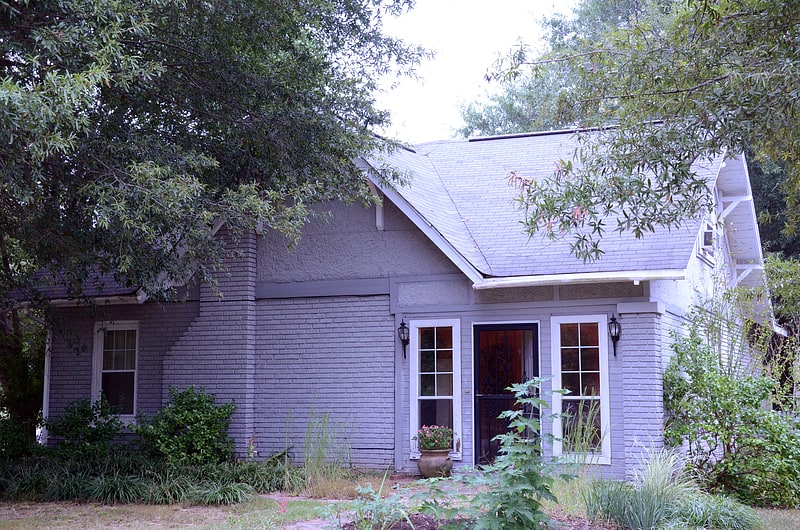
The Shue House is a historic house at 108 Holly Street in Beebe, Arkansas. It is a storey and a half wood-frame structure, finished in brick, with a cross-gable roof and a brick foundation. A gabled wall dormer features a half-timbered stucco exterior, and large knee brackets. The house, built in 1935 by the owner of a local oil company, is one of the city's best examples of late Craftsman architecture.
The house was listed on the National Register of Historic Places in 1991.[4]
Beebe Jail
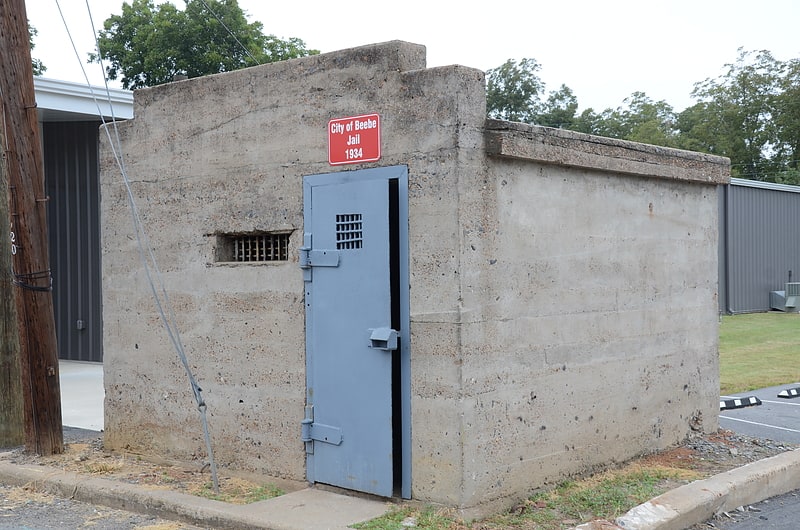
The Beebe Jail is a historic jail building in Beebe, Arkansas. The small single-story concrete structure is set on an alley south of East Illinois Street on the east side of North Main Street. It is distinctive for its slightly rounded concrete roof, with a parapet rising above the front facade. The interior has two small cells, each with a barred window, and a small vestibule area. The jail was built as a Works Progress Administration project in 1935.
The building was listed on the National Register of Historic Places in 1991.[5]
William Thomas Abington House
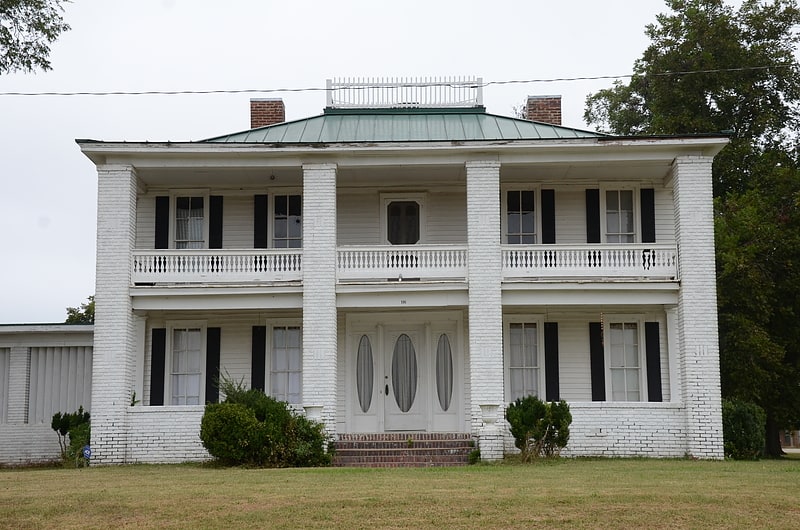
The William Thomas Abington House is a historic house located on Center Street in Beebe, Arkansas, midway between East Mississippi Street and Birch Street.[6]
Laws-Jarvis House

The Laws-Jarvis House is a historic house at 409 North Main Street in Beebe, Arkansas. It is a single-story wood-frame structure, with a weatherboard exterior and brick foundation. Its original form, as built about 1880, featured an L-shaped layout, with central entrance gabled porch supported by slender columns with plain capitals, and windows with pedimented lintels. It has since been altered by an addition to the rear, giving its roof an overall hip shape. The house is one of White County's surviving 19th-century houses.
The house was listed on the National Register of Historic Places in 1992.[7]
Staggs-Huffaker Building

The Staggs–Huffaker Building is a historic commercial building at North Main and West Illinois Streets in Beebe, Arkansas. It is a two-story vernacular brick building, with an angled corner bay. The Main Street facade has a wood-shingled awning extending across the first floor. There is brick corbelling above the second level, and a gabled parapet above. Built about 1880, it is one of a small number of commercial buildings to survive from the city's early railroad-related development.
The building was listed on the National Register of Historic Places in 1991.[8]
Powell Clothing Store
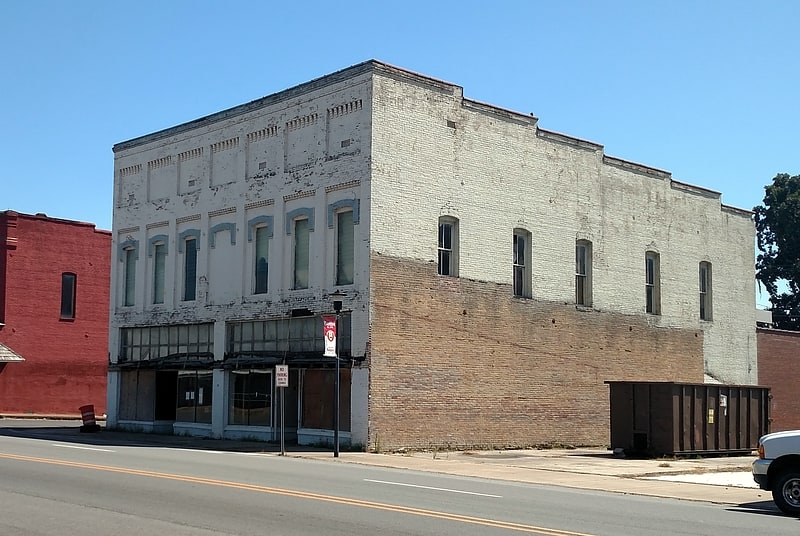
Powell Clothing Store is a historic commercial building at 201 North Main Street in Beebe, Arkansas. It is a two-story brick building, built about 1885 in what was then the city's economic heart. It is a basically vernacular structure, with modest brick corbelling on the cornice and panels of the front facade. It is one of only a few commercial buildings to survive in the city from that period.
The building was listed on the National Register of Historic Places in 1991.[9]
Berry House
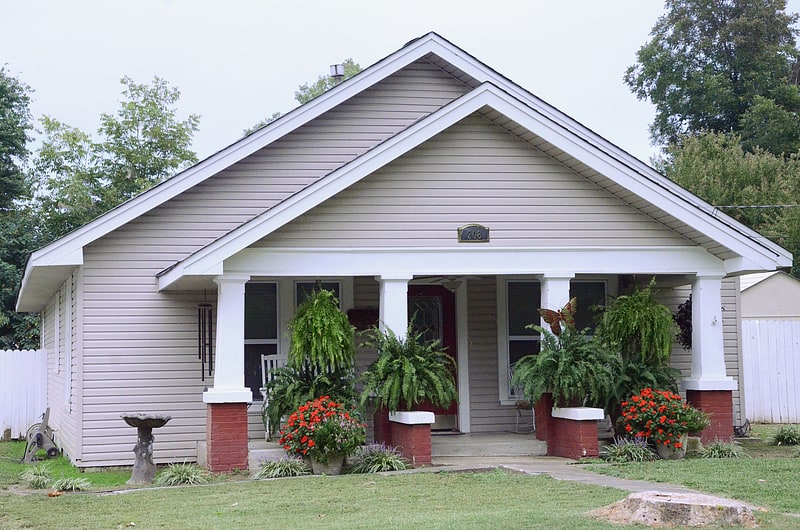
The Berry House is a historic house located in Beebe, Arkansas.[10]
Sellers House
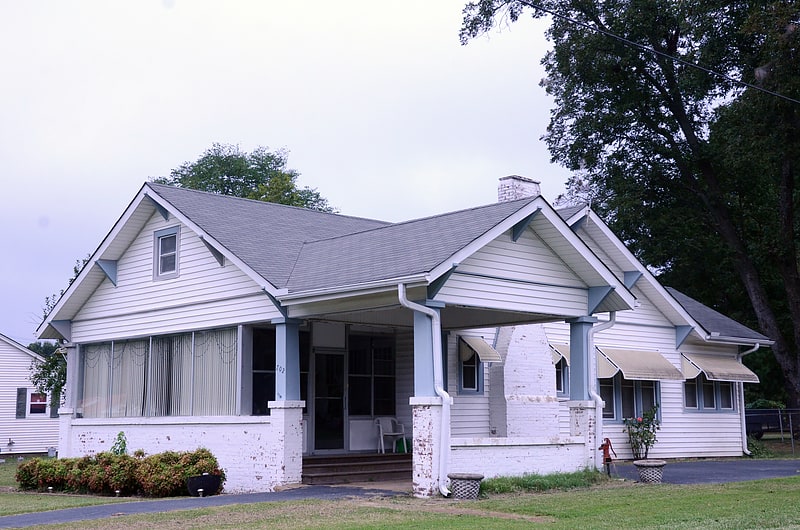
The Sellers House is a historic house at 702 West Center Street in Beebe, Arkansas, United States. It is a single story, with a gabled roof, weatherboard exterior, and brick foundation. Several cross gables project from the roof, including one acting as a porch and porte cochere. The gables show rafter ends in the Craftsman style. The house was built about 1925, and is a particularly picturesque example of the Craftsman style in the city.
The house was listed on the National Register of Historic Places in 1991.[11]